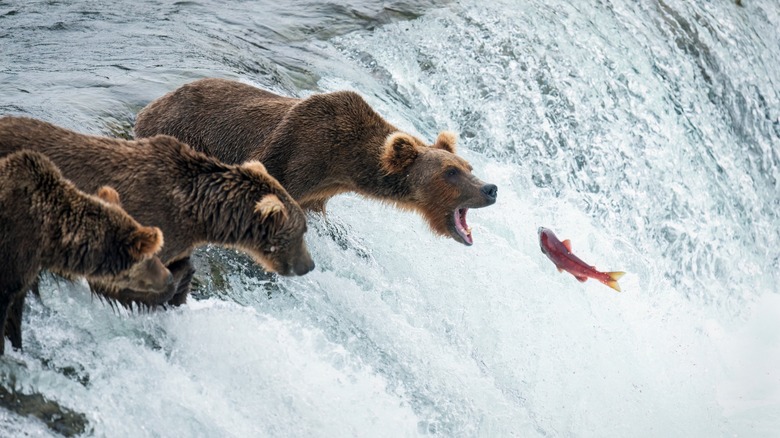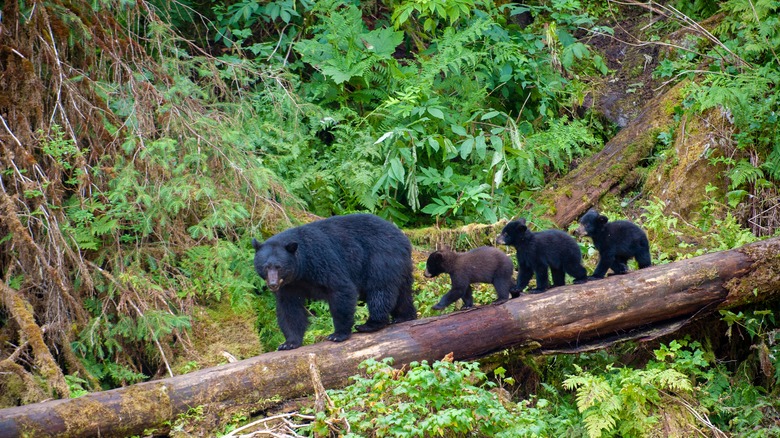Safely Watch Bears In Their Natural Habitat At Alaska's Little-Known Observation Area
Hiking through Alaska's misty Tongass National Forest, you might see towering pines, craggy peaks, peat moss landscapes, glaciers, and fields of wildflowers. However, most people make the journey to Tongass for another reason: to see the bears. While some hikers might find the idea of encountering one of these mammals on the trail terrifying, every year, people flock to Anan Wildlife Observatory for the opportunity to observe these incredible creatures in their natural habitat.
Many of Alaska's wild places, like the vast and unbelievably beautiful Lake Clark National Park, attract visitors eager to see bears. However, few provide as incredible an experience as the Anan Wildlife Observatory, designed specifically to give visitors the opportunity to observe wild bears up close without alarming them. Not only does this make the situation safe for humans and animals alike, it also means that those who travel to Tongass can discover the way bears behave in the wild.
What makes Anan Wildlife Observatory the perfect place to see bears?
While wilderness lovers in Alaska have their choice of destinations, those wishing to see bears will want to seriously consider Anan Wildlife Observatory. Every summer, the pretty, fast-flowing Anan Creek fills with humpback salmon rushing to their spawning place. This cyclical surge of fish attracts many, many bears to the stream, hungry for fatty salmon that will help them gain the weight they need to survive a sluggish winter hibernating in their dens. Best of all, the incredible creek supports both black and brown bears.
The term "observatory" might conjure up images of stargazing, but Anan Creek functions more like a platform, culminating in a small covered area for taking photographs. You might spot seals, eagles, and mink coming to eat the fish, but the bears steal the show, with up to dozens at a time waiting in the water to catch salmon.
How to visit the observatory
The bears flock to the creek during the peak season, from July 5 to August 25. To keep the experience safe and natural for the wildlife, the observatory limits the number of people who can use the space at any time. If you hope for a once-in-a-lifetime view of black and brown bears eating together, you'll have to get a permit from recreation.gov in advance. Reservations open at 8 a.m. Alaska Time February 1. Alternatively, you can go with an authorized guide, who will handle your reservation and transportation. If you plan to make your own way, you'll probably want to take a private water taxi, the Breakaway Ferry, or another boat to the nearby town of Wrangell. Alternatively, you can book flights from Seattle, Juneau, and Anchorage.
You probably already know that the National Park Service warns visitors never to try to take a selfie with animals like bears. However, a U.S. Forest Service ranger will greet you at the trailhead when you arrive to give you the full rundown on how to stay safe around the bears. Then, you and the other visitors will continue up the trail by yourselves for about half a mile before reaching the observatory.

